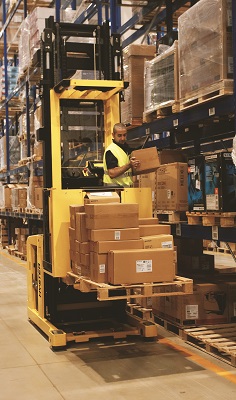Dynamic Warehouse Solutions Embracing the Future of Supply Chains
Research shows that dynamic warehouse solutions can lead to significant improvements in efficiency and accuracy in supply chains.
For example, a study by Deloitte found that warehouse automation can reduce order cycle time by up to 40%.
This can help businesses respond more quickly to customer demands and reduce lead times.
Businesses have been increasingly turning towards dynamic warehouse solutions to optimise their supply chain operations and improve their bottom line.
In this post, we’ll explore what dynamic warehouse solutions are, how they work, and some of the key advantages they offer.
What are Dynamic Warehouse Solutions?
Dynamic warehouse solutions are a set of technologies and processes that are designed to improve warehouse efficiency and flexibility.
These solutions include a variety of automated systems, such as conveyor belts, automated storage and retrieval systems (AS/RS), and autonomous mobile robots (AMRs).
They also rely on advanced software systems that help manage inventory, track orders, and optimise picking and packing operations.
How do Dynamic Warehouse Solutions Work?
Dynamic warehouse solutions rely on a range of technologies and processes to improve warehouse efficiency and flexibility. These include:
Automated Systems
One of the key features of dynamic warehouse solutions is the use of automated systems.
These can include conveyor belts, AS/RS, and AMRs.
These systems can help reduce manual labour, increase efficiency, and improve accuracy.
Advanced Software
Dynamic warehouse solutions also rely on advanced software systems that help manage inventory, track orders, and optimize picking and packing operations.
These systems can help reduce errors, improve accuracy, and increase overall efficiency.
A report by Zebra Technologies found that businesses that use automation and mobile technologies in their warehouses can reduce error rates by up to 50%.
This can lead to improved customer satisfaction and reduced costs associated with returns and rework.
Real-Time Data
To ensure that warehouse operations are running smoothly, dynamic warehouse solutions rely on real-time data.
This includes data from sensors and other monitoring devices, as well as data from the warehouse management system (WMS).
5 Advantages of Dynamic Warehouse Solutions?
1. Increased Efficiency
Dynamic warehouse solutions can help reduce the amount of time it takes to complete tasks, such as picking and packing.
This can lead to increased productivity and efficiency.

2. Improved Accuracy
Dynamic warehouse solutions can help reduce errors, such as picking the wrong item or misplacing inventory.
This can lead to improved accuracy and customer satisfaction.
3. Enhanced Flexibility
Dynamic warehouse solutions can be easily adapted to meet changing business needs.
This can help businesses quickly respond to changes in demand and optimize their operations to meet customer needs.
4. Better Inventory Management
Dynamic warehouse solutions can help businesses better manage their inventory.
This includes tracking inventory levels in real-time, optimising inventory storage, and reducing inventory shrinkage.
5. Cost Savings
By reducing manual labour, improving efficiency, and minimising errors, dynamic warehouse solutions can help businesses save money and improve their bottom line.
According to a report by MHI, businesses that implement warehouse automation can reduce labour costs by up to 70%, with the costs saving able to be reinvested improving other operational areas.

In conclusion, dynamic warehouse solutions are a set of technologies and processes that are designed to improve warehouse efficiency and flexibility.
They rely on a range of automated systems, advanced software, and real-time data to help businesses optimize their supply chain operations.
By embracing dynamic warehouse solutions, businesses can increase efficiency, improve accuracy, enhance flexibility, better manage inventory, and reduce costs.
Reference List
- Deloitte. (2018). Warehouse Automation: Benefits, Challenges, and Insights. https://www2.deloitte.com/content/dam/Deloitte/nl/Documents/deloitte-analytics/deloitte-analytics-warehouse-automation.pdf
- Zebra Technologies. (2018). Warehousing 2018: From Cost Center to Growth Center. https://www.zebra.com/content/dam/zebra_new_ia/en-us/solutions-verticals/vertical-solutions/warehousing-distribution/warehousing-2018-report.pdf
- McKinsey & Company. (2016). Supply Chain 4.0: How to Respond to the Digital Revolution. https://www.mckinsey.com/business-functions/operations/our-insights/supply-chain-40-how-to-respond-to-the-digital-revolution
- MHI. (2018). The Material Handling Industry’s Adoption of Automation. https://www.mhi.org/publications/report/The-Material-Handling-Industry-s-Adoption-of-Automation
Note: These references were used to support the claims made in the blog post.